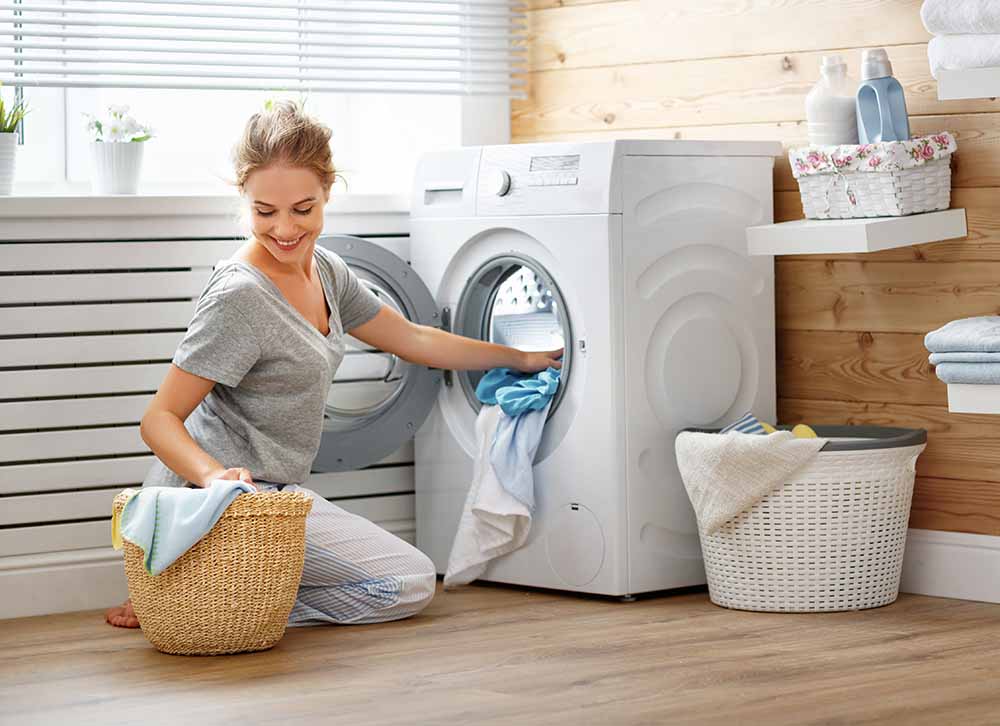
Of all the labour-saving devices we take for granted in modern life, the electric washing machine and dryer are probably the most miraculous. Before these ingenious machines were invented, washing clothes was a daily chore involving cauldrons of boiling water, washboards, wringers and a lot of strenuous manual labour. As intuitive, efficient, and convenient as the modern washer and dryer are, however, they still require a bit of understanding and maintenance to do their jobs properly and safely.
Here are some things everyone should know about your typical washer and dryer, as well as how to safely navigate your home’s laundry room.
Safety first Making the most of your machines Avoiding floods
Safety first
The most important things to know about your laundry room are the places where potential dangers lie. Here’s how to avoid some of the most common laundry room mishaps:
- Wipe up spilled laundry soap immediately. Since most laundry rooms have smooth floors, and detergent is extremely slippery, even a small spill can create a dangerous slipping hazard.
- Store detergents and other chemical out of kids’ reach. Every laundry room should have a high shelf to keep things like bleach and fabric softeners where tiny hands can’t get to them.
- Clean the lint trap after each load. Lint buildup can cause your dryer to overheat, which can decrease efficiency and increase the risk of a fire. It’s also good practice to vacuum the opening around the lint trap periodically, and clean your dryer vent hose annually.
Making the most of your machines
Washing machines are incredibly complicated pieces of technology, full of sensors and moving parts designed to clean your clothes as efficiently as possible. Here are a few things you can do to help them operate at peak efficiency:
- Read the manual. Sure, it may not be as compelling as the best-seller on your nightstand, but familiarizing yourself with the manufacturer’s best practices will help you get your clothes cleaner and help your machine last longer.
- Don’t overload it. No matter what type of machine you have, it’ll work better if the clothes have plenty of room to slosh around.
- Don’t use too much detergent. For most machines and most loads, 1-2 tablespoons of detergent ought to be enough to get the job done. If you’re using more than that, you risk getting detergent buildup in your clothes, which can make them rough and starchy.
- Clean your washing machine regularly. Be sure to wipe out the rubber seal of front-loading machines after every few loads to prevent mould from growing. Once every few months (or whatever your manual recommends) run the machine empty on a hot wash cycle with a cup of white vinegar instead of detergent.
- Leave the machine door open after using. To avoid mould and mildew buildup, leave the washing machine door open until the interior is completely dry.
Dryers are equally sophisticated contraptions with their own list of do’s and don’ts (some of which vary depending on the make and model, which is another good reason to read the owner’s manual.) Here are a few general tips to practice:
- Don’t overload it. Dryers work by circulating hot air between your clothes, a task that’s made much more difficult if your clothes are packed in like passengers on a rush-hour bus. Fortunately, if you’re not overloading your washing machine, it should be easier to not overload your dryer as well.
- Skip the dryer sheets. Unless you have major issues with static cling, dryer sheets don’t do all that much and can leave residue on your clothes and in your dryer vent. If you don’t notice a difference without them, you can skip them altogether. If things are sticking together and not feeling downy soft, consider trying reusable wool dryer balls instead.
- Don't over-dry your clothes. Despite the convenience of tossing everything in the dryer together, not all of your clothes require this step. Over-drying can also wear your clothes out faster. Synthetic fabrics (your workout clothes, for example) will probably dry just as quickly hanging on a drying rack or shower rail, and they might last longer as a result.
Avoiding floods
Leaky washer hoses are the source of many a laundry room flood. To avoid this scenario, check the condition of your hoses regularly and familiarize yourself with the location of your washing machine’s water shutoff valve (it’s usually where the hose meets the wall). Other factors, like overloading the machine and using too much detergent can also increase the likelihood of a flood. Make sure you have
Jeremy Freed is a freelance writer and editor based in Toronto. His writing about fashion, travel, food and design appears in Sharp, Harry and re:Porter magazines, among many others.